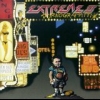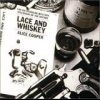Don't Mock an Effigy
Today I'm kicking off the first of a series of articles on different horrific subjects. Enjoy.
Throughout history man has created copies, alternate versions of himself and the creatures he shares the world with. From the idols of the most ancient of cultures to the robots of today we have been driven to create effigies, inanimate clones. For as long as we have made these effigies though there have been tales of their power, and of them taking on lives of their own. These tales, folklore and myths are not just a part of our history but find release in our modern stories and in particular our films.
The most common effigies today are toys: stuffed animals, dolls, and action figures. Everybody has grown up with at least one of these. Everybody attributes them (at least in childhood) with certain personalities, histories, and lives of their own. As such we have given them power, if only the power to be our friends. These powers were comforting and through the effigy we expressed things we otherwise might not, such a courage, and kindness. They helped us to explore the world around us and more importantly the interaction skills we would require to fit in with each other.
In the movies and in books effigies are given more credence. Insidious forces use them as bodies to perform their evil acts. Foul sorcerers cause pain, blindness and death with voodoo dolls. Statues guard places and serve as warnings. Golems are raised in revenge. Mechanised toys wage war. And even men can inhabit them until more suitable accommodations can be found.
It seems that people have to be reminded that an effigy is a serious thing and should be treated with respect. A boy who tries to hide his clown doll is attacked by it later (Poltergeist). People mock Chucky and pay the price (Child's Play). A puppet defends his new friend (Pinocchio's Revenge). A dimestore mannequin jealously guards a dirty secret that could destroy a man (The Fear). A soldier toy grows up into a man and takes revenge for animal cruelty (Xtro). Simple wooden figures mark off territory that should be avoided at all cost (The Blair Witch Project). A doll collection fights prejudice (Tales from the Hood). And a gift from Grandma, a cymbal clashing monkey influences events in many a deadly turn (The Devil's Gift).
It seems though that even some of the murderous effigies toe the line between good and serious evil. They defend the weak and innocent, they mete out justice, they save lives even while they kill. Yet they still are forces to be reckoned with and not to be treated poorly. An effigy shares not only the form that it copies but the behaviours as well, up to and including the morality of the original, although sometimes in conflict to that of their creator.
The most common moral in an effigy story, particularly where the effigy is central to the action, seems to be treat them with respect, and do not mock them or the powers that they have. So next time some kid shoves a doll in your face, or leaves it somewhere it shouldn't be, be kind, be gentle, or you just might find yourself in a battle for your life against it when you least expect.
© 2001 Robert G. Male
Mood: down.
Music: Suzi (Wants Her All Day What?) by Extreme and You and Me by Alice Cooper.
 | Buy these at Amazon.ca Click Images to Buy |  |





0 Comments:
Post a Comment
<< Home